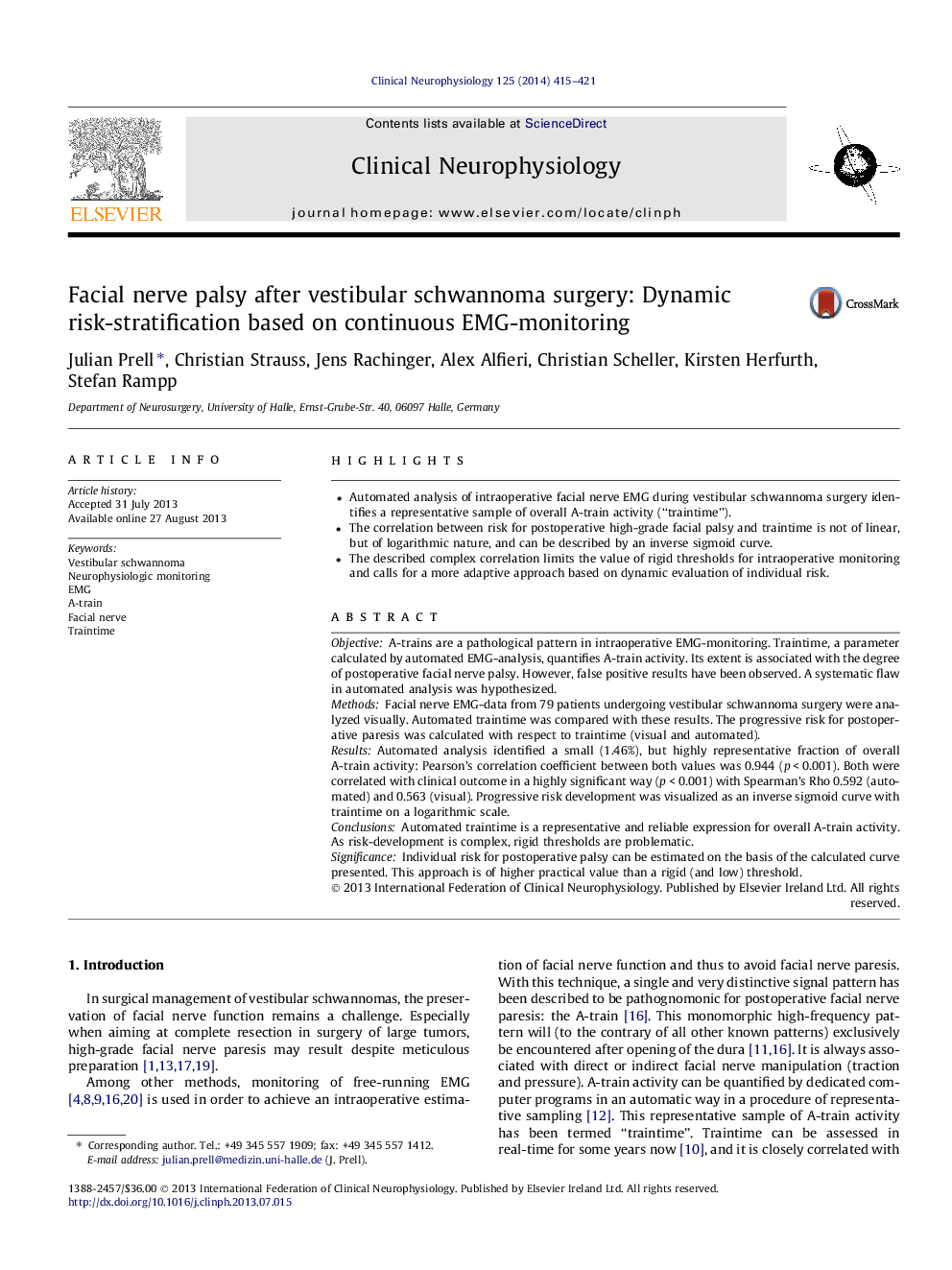| کد مقاله | کد نشریه | سال انتشار | مقاله انگلیسی | نسخه تمام متن |
|---|---|---|---|---|
| 3044413 | 1184999 | 2014 | 7 صفحه PDF | دانلود رایگان |

• Automated analysis of intraoperative facial nerve EMG during vestibular schwannoma surgery identifies a representative sample of overall A-train activity (“traintime”).
• The correlation between risk for postoperative high-grade facial palsy and traintime is not of linear, but of logarithmic nature, and can be described by an inverse sigmoid curve.
• The described complex correlation limits the value of rigid thresholds for intraoperative monitoring and calls for a more adaptive approach based on dynamic evaluation of individual risk.
ObjectiveA-trains are a pathological pattern in intraoperative EMG-monitoring. Traintime, a parameter calculated by automated EMG-analysis, quantifies A-train activity. Its extent is associated with the degree of postoperative facial nerve palsy. However, false positive results have been observed. A systematic flaw in automated analysis was hypothesized.MethodsFacial nerve EMG-data from 79 patients undergoing vestibular schwannoma surgery were analyzed visually. Automated traintime was compared with these results. The progressive risk for postoperative paresis was calculated with respect to traintime (visual and automated).ResultsAutomated analysis identified a small (1.46%), but highly representative fraction of overall A-train activity: Pearson’s correlation coefficient between both values was 0.944 (p < 0.001). Both were correlated with clinical outcome in a highly significant way (p < 0.001) with Spearman’s Rho 0.592 (automated) and 0.563 (visual). Progressive risk development was visualized as an inverse sigmoid curve with traintime on a logarithmic scale.ConclusionsAutomated traintime is a representative and reliable expression for overall A-train activity. As risk-development is complex, rigid thresholds are problematic.SignificanceIndividual risk for postoperative palsy can be estimated on the basis of the calculated curve presented. This approach is of higher practical value than a rigid (and low) threshold.
Journal: Clinical Neurophysiology - Volume 125, Issue 2, February 2014, Pages 415–421